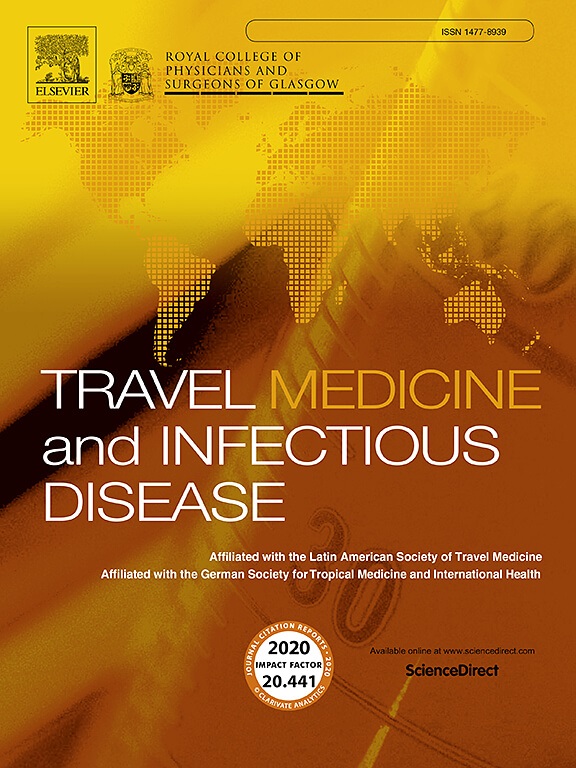从肯尼亚返回的塞尔维亚旅行者皮肤蝇蛆病。
IF 4.7
3区 医学
Q1 INFECTIOUS DISEASES
引用次数: 0
摘要
背景:皮肤蝇蛆病是一种由蝇类幼虫引起的体外寄生虫病。在非流行地区很少见,临床医生往往不熟悉,容易误诊。病例介绍:一名24岁的塞尔维亚旅行者从肯尼亚返回后,大腿出现疼痛性疖性病变。病变最初作为昆虫叮咬治疗,肌肉注射皮质类固醇、抗组胺药和局部使用倍他米松-庆大霉素。幼虫的自发排出导致了对蝇蛆病的识别。方法与结果:手术切除3只3龄(L3)幼虫。形态特征和线粒体cox1测序鉴定了嗜人虫草。基因分析证实与参考序列同源性99%。结论:本病例强调了旅行者镰状丝虫病诊断的挑战。了解旅行史,保持临床怀疑和分子分析对准确诊断至关重要。及时清除幼虫和预防性抗生素可最大限度地减少并发症并改善结果。本文章由计算机程序翻译,如有差异,请以英文原文为准。
Cutaneous myiasis in a Serbian traveller returning from Kenya
Background
Cutaneous myiasis is an ectoparasitic disease caused by fly larvae. In non-endemic regions it is rare, often unfamiliar to clinicians and readily misdiagnosed.
Case presentation
A 24-year-old Serbian traveller developed painful furuncular lesions on the thigh after returning from Kenya. The lesions were initially treated as insect bites with intramuscular corticosteroid, antihistamines and topical betamethasone–gentamicin. Spontaneous expulsion of a larva led to the recognition of myiasis.
Methods and results
Three third-instar (L3) larvae were surgically removed. Morphological features and mitochondrial cox1 sequencing identified Cordylobia anthropophaga. Genetic analysis confirmed 99 % identity with reference sequences.
Conclusion
This case highlights the challenges associated with diagnosis of furuncular myiasis in travellers. Awareness of travel history, maintenance of clinical suspicion and molecular analysis are essential for accurate diagnosis. Timely larval removal and prophylactic antibiotics minimise complications and improve outcomes.
求助全文
通过发布文献求助,成功后即可免费获取论文全文。
去求助
来源期刊

Travel Medicine and Infectious Disease
PUBLIC, ENVIRONMENTAL & OCCUPATIONAL HEALTH-INFECTIOUS DISEASES
CiteScore
19.40
自引率
1.70%
发文量
211
审稿时长
49 days
期刊介绍:
Travel Medicine and Infectious Disease
Publication Scope:
Publishes original papers, reviews, and consensus papers
Primary theme: infectious disease in the context of travel medicine
Focus Areas:
Epidemiology and surveillance of travel-related illness
Prevention and treatment of travel-associated infections
Malaria prevention and treatment
Travellers' diarrhoea
Infections associated with mass gatherings
Migration-related infections
Vaccines and vaccine-preventable disease
Global policy/regulations for disease prevention and control
Practical clinical issues for travel and tropical medicine practitioners
Coverage:
Addresses areas of controversy and debate in travel medicine
Aims to inform guidelines and policy pertinent to travel medicine and the prevention of infectious disease
Publication Features:
Offers a fast peer-review process
Provides early online publication of accepted manuscripts
Aims to publish cutting-edge papers
 求助内容:
求助内容: 应助结果提醒方式:
应助结果提醒方式:


